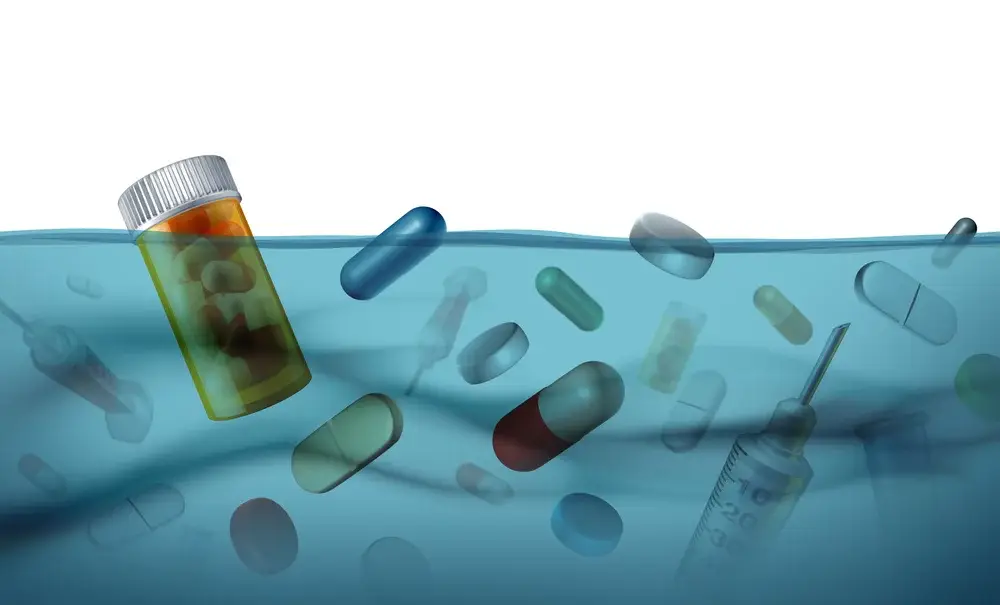Pharmaceutical Wastewater Treatment
Pharmaceutical wastewater is one of the most serious sources of pollution, with complex components, many types of organic pollutants, high concentrations, high COD and BOD values and large fluctuations, large differences in BOD/COD values of wastewater, suspended solids and NH3-N It has the characteristics of high concentration, deep color, refractory biodegradable and toxic substances, and is one of the most difficult industrial wastewater to treat.
Sources and classification of pharmaceutical wastewater
classification
The pharmaceutical industry pollutant discharge standard system consists of 6 sub-standards:
1. Fermentation
Fermented pharmaceutical wastewater comes from the processes of fermentation, filtration, extraction and crystallization, refining, and refining. This type of wastewater has complex components, imbalanced carbon-nitrogen ratio, poor biodegradability, and contains a large amount of biochemical inhibitors such as sulfate, drug potency and its degradation products.
2. Chemical synthesis
Chemical synthesis pharmaceutical wastewater is wastewater produced when chemical synthesis methods are used to produce drugs and pharmaceutical intermediates. The quality and quantity of wastewater vary greatly, the pH changes greatly, there are many types of pollutants, complex components, poor biodegradability, and contain refractory substances and antibiotics with antibacterial effect, which are toxic and high in color.
3. Extraction
Extraction pharmaceutical wastewater includes waste filtrate, waste mother liquor and solvent recovery residue after extracting drugs from mother liquor. The composition of wastewater is complex, the water quality and quantity vary greatly, and the pH fluctuation range is large.
4. Traditional Chinese Medicine
Traditional Chinese medicine wastewater is generated in the process of washing, soaking and cooking medicinal materials, washing, preparation and other processes in the production workshop. This type of wastewater has high content of organic pollutants, complex components, difficult to precipitate, high chroma, good biodegradability, and large changes in water quality and quantity.
5. Bioengineering
Bioengineering pharmaceutical wastewater is wastewater produced by cultivating or extracting bacterial vaccine plasma, serum antibiotics, insulin and gastric enzymes from animal organs. The composition of wastewater is complex, the content of COD and SS is high, the water quality changes greatly, and there are antibiotics that are difficult to biodegrade and have antibacterial effect.
6. Mixed preparations
The pharmaceutical wastewater of mixed preparations comes from the cleaning wastewater generated during the bottle washing process, the washing water of production equipment and the washing water of the workshop floor. The water quality of this type of wastewater is relatively simple, belonging to low-to-medium content organic wastewater.
Characteristics of pharmaceutical wastewater
The main characteristics of pharmaceutical wastewater quality are as follows:
- There are many drainage points, and high and low concentration wastewater are discharged separately, which is conducive to cleaning and diversion
- Intermittent discharge of high-concentration wastewater requires larger collection and adjustment devices
- High concentration of pollutants
- Low carbon-nitrogen ratio is not conducive to improving the load and efficiency of wastewater biological treatment
- High nitrogen content affects COD removal
- The sulfate concentration is generally high, which brings difficulties to the anaerobic treatment of wastewater
- Wastewater contains substances that are difficult for microorganisms to degrade or even inhibit microorganisms
- Water generally has a higher chroma
Pharmaceutical wastewater treatment
The difficulty in the treatment of pharmaceutical wastewater is that some components in the wastewater may inhibit the growth of microorganisms, further reduce the biodegradability of the wastewater, and make the effluent not meet the discharge standards. Therefore, improving the biodegradability is the primary problem in the process of pharmaceutical wastewater treatment. At present, the treatment methods of pharmaceutical wastewater mainly include physical and chemical methods, chemical methods, biochemical methods and combined treatment processes.
1. Physical and chemical methods Physical and chemical methods can be used as a pretreatment method to improve the biodegradability of wastewater, and can also be used as an advanced treatment method to make the effluent meet the discharge standards. The main physical and chemical treatment methods include coagulation, adsorption, air flotation, ion exchange and membrane separation.
2. Chemical method Chemical method is a traditional method for wastewater treatment equipment. At present, oxidation method, electrolysis method and advanced oxidation method are more common.
3. Biochemical method In the process of pharmaceutical wastewater treatment, the aerobic or anaerobic biological treatment method alone often cannot achieve the expected treatment effect, so a combination of various methods is often used to meet the discharge standards.
Visit www.evuchina.com for more informations!



